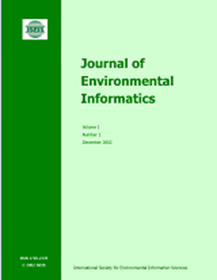Suaeda salsa 与水文连通性的关系:从植物性状网络的角度看
IF 5.4
1区 环境科学与生态学
Q1 ENVIRONMENTAL SCIENCES
引用次数: 0
摘要
植物性状如何对环境变化做出反应已受到全世界越来越多的关注。然而,仅从独立的植物性状出发,而不考虑植物性状之间的密切联系,很难揭示植物的综合响应。植物性状网络(PTN)是研究植物性状如何适应环境变化以及找出植物关键性状的一种新方法。我们采集了中国黄河三角洲苏埃达莎草湿地五个采样区的土壤和植物样本,通过对八个指标的主成分分析构建了水文连通性指数(HCI)。通过对九种植物性状的网络分析,估算了水文连通性指数(PTN)。结果表明,五个研究区域的水文连通指数存在显著差异。在中等 HCI 的地区,PTN 的紧密度最高,随着 HCI 的升高,PTN 的复杂度降低。一般来说,在最适合植物生长的中等 HCI 区域,PTN 的表现最好。植物地上生物量是 PTNs 的核心性状,因为它具有较高的度和间度中心性。研究结果表明,在不同的水文连接条件下,Suaeda salsa 采取了不同的生长策略。在最适合植物生长的区域,Suaeda salsa 增强了不同性状的连接;而在水文连接较弱的区域,Suaeda salsa 则形成了不同的功能模块组。这项研究为植物如何应对水文连通性的变化提供了新的视角。本文章由计算机程序翻译,如有差异,请以英文原文为准。
Suaeda salsa in Relation to Hydrological Connectivity: From the View of Plant Trait Networks
How plant traits respond to environment changes has been given more concerns worldwide. However, it is hard to reveal the integrative responses of plants only based on independent plant traits without considering the close links among plant traits. Plant trait network (PTN) is emerging as a new way to study how plant traits adapt to changing environment and to find out the key plant trait. We collected soil and plant samples from five sampling zones in Suaeda salsa wetlands of the Yellow River Delta in China to construct hydrological connectivity index (HCI) by principal component analysis of eight indicators. PTNs were estimated by network analysis of nine plant traits. The results showed that five study areas had significant different HCIs. The PTNs showed the max tightness in areas with medium HCI and the complexity of PTNs decreased with the rise of HCI. Generally, PTNs exhibited the best performance in the areas with medium HCI in which were the most appropriate for plants to grow. Plant aboveground biomass was the central trait PTNs since it had a high degree as well as betweenness centrality. The findings indicate that Suaeda salsa takes different growth strategies under different hydrological connectivity conditions. Suaeda salsa enhanced the connections of different traits in areas which were the best for plants to grow while Suaeda salsa formed different groups of function modules in areas where hydrological connectivity was weak. This study may give new sights on how plant response to the change of hydrological connectivity.
求助全文
通过发布文献求助,成功后即可免费获取论文全文。
去求助
来源期刊

Journal of Environmental Informatics
ENVIRONMENTAL SCIENCES-
CiteScore
12.40
自引率
2.90%
发文量
7
审稿时长
24 months
期刊介绍:
Journal of Environmental Informatics (JEI) is an international, peer-reviewed, and interdisciplinary publication designed to foster research innovation and discovery on basic science and information technology for addressing various environmental problems. The journal aims to motivate and enhance the integration of science and technology to help develop sustainable solutions that are consensus-oriented, risk-informed, scientifically-based and cost-effective. JEI serves researchers, educators and practitioners who are interested in theoretical and/or applied aspects of environmental science, regardless of disciplinary boundaries. The topics addressed by the journal include:
- Planning of energy, environmental and ecological management systems
- Simulation, optimization and Environmental decision support
- Environmental geomatics - GIS, RS and other spatial information technologies
- Informatics for environmental chemistry and biochemistry
- Environmental applications of functional materials
- Environmental phenomena at atomic, molecular and macromolecular scales
- Modeling of chemical, biological and environmental processes
- Modeling of biotechnological systems for enhanced pollution mitigation
- Computer graphics and visualization for environmental decision support
- Artificial intelligence and expert systems for environmental applications
- Environmental statistics and risk analysis
- Climate modeling, downscaling, impact assessment, and adaptation planning
- Other areas of environmental systems science and information technology.
 求助内容:
求助内容: 应助结果提醒方式:
应助结果提醒方式:


